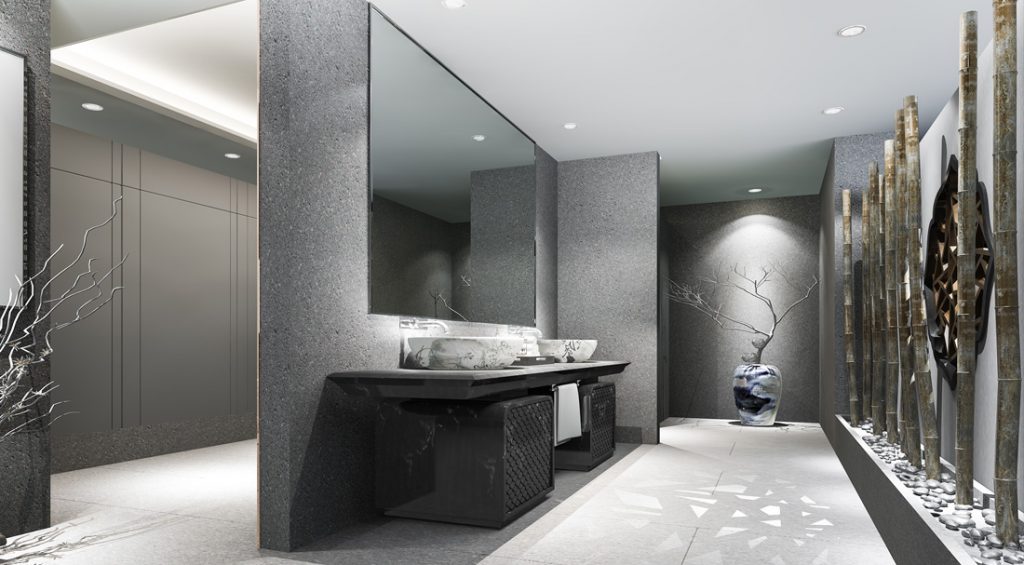LED Downlight Installation in Recessed Ceiling by a Local Electrician
Lightspeed Electrical recently undertook a project consisting of a complete strip-out of all existing installed halogen downlight fittings, followed by the installation of LED downlights.
There are many reasons why you should consider changing your lights to LED (Light-emitting Diode). Here are some of the main benefits:
1. Long Operational Life
Perhaps the most beneficial aspect of LED lighting is its outstanding longevity. This type of lighting can last up to an incredible 100,000 hours – meaning it can be up to 20 years or longer before they need to be replaced.
With continuous use (if they were never turned off), LEDs would last you around 11 years. At 50% operation, they would need to be replaced after 22 years. For typical usage – about 8 hours per day – it would be 20 years before a replacement was necessary.
What makes LED lighting last so long? They work very differently from standard lighting – it’s not typical for LEDs to burn out like standard lightbulbs, and their power output is considerably lower. This also means…
2. LEDs are Exceptionally Energy Efficient
If you’re considering installing downlights, you’ll be pleased to know that LEDs use very little energy when compared to the amount of light they provide. In comparison to traditional light bulbs, LED lighting provides an estimated 80-90% energy efficiency. In terms of electricity used, around 80% is converted into light, with only 20% lost in the form of heat and other types of energy.
Essentially, LED lighting has an output of 80% light and 20% heat, whereas incandescent lighting is the opposite – the energy output of traditional lighting is 20% light and 80% heat. Let’s take a look at the figures in terms of your energy bill:
If the lighting portion of your electricity bill was $100 when using traditional lighting, you’d be paying $80 to heat your room through your lightbulbs! Only $20 of your lighting bill would be used to light the same room. However, when using LED lighting, the same amount of light produced would only cost you $20 – while also saving you $80!
This energy efficiency added to the long lifespan of LED lighting means you save an incredible amount of money in the long run.
3. LED Lighting is Environmentally Friendly
Unlike traditional lighting, LED lights do not use toxic chemicals to work. Standard fluorescent lighting typically contains many chemicals and materials such as mercury, which is incredibly toxic to the environment.
LED lighting is also 100% recyclable, which helps you to drastically reduce your overall carbon footprint. The longevity of LEDs can also contribute to a greener future as using them instead of incandescent lightbulbs reduced the need for producing less efficient traditional lightbulbs. 1 LED lightbulb can replace around 25 incandescent lightbulbs.
So, when you’re installing LED downlights, you’re also saving the environment.
4. LEDs Are Incredibly Durable
LEDs are made of highly durable components which makes them extremely rugged and able to withstand the roughest of conditions. They’re shock, vibration and impact-resistant, making them the ideal choice for outdoor lighting systems in a wide variety of situations.
5. Almost No UV Emissions
Because LEDs produce very little infrared light and almost zero UV emissions, they are suitable for heat-sensitive goods, and for the illumination of UV-sensitive objects in a range of locations such as art galleries, museums and archaeological sites.
6. Flexible Lighting Design
Due to their diverse nature, LEDs can be formed into any shape you can think of – making them a truly dynamic solution to a variety of illumination needs. Fantastic lighting effects can be achieved through well-designed LED lighting systems, with the ability to dynamically control colour, light and distribution of LEDs to create almost any effect you could ask for.
Additionally, LED illumination can be used to create mood lighting, and the effect is already being used in classrooms, aeroplanes, and countless other locations. The use of LEDs for mood lighting is expected to be seen throughout our daily lives in only a matter of years.
7. LEDs Can Withstand Extreme Temperatures
While fluorescent lighting can be affected by low temperatures, LEDs are considerably more resilient to both extreme cold and heat. This makes them ideal for a variety of settings such as freezer rooms, outdoor winter settings, and so on.
8. Focused Dispersement of Light
Much higher efficiency of application can be achieved with LED lighting compared to traditional lighting. Light can be directed to and focused on a specific location without the need for external reflectors, resulting in much higher efficiency of the application.
9. Instant Light and Frequent Switching
Many traditional lighting systems take a moment to ‘warm up’ before they are fully operational – but not so with LEDs. LED lighting is immediately fully operational the moment it is switched on, making it the ideal solution for many infrastructure lighting systems such as signal and traffic lights.
Also, unlike traditional lighting that is affected by frequent on and off switching, the lifespan and effectiveness of LEDs are unaffected by such frequent switching.
10. LEDs Can be Run on Low-Voltage Power Supplies
As LED illumination only requires a low-voltage power supply to run, they are great for use in outdoor settings, such as situations where solar energy is chosen or even necessary.

